
吴冠中以其卓思之见,对国画之旧规,深表疑义。彼不囿于古法之皴描,及诗书画三者合一之程式,以为此类陈规,拘束艺者之创造力与表现力。观其言,此等程式,犹如陈词滥调,复述古事,未足以扣时代之脉搏也。吴先生主张,今之文人画,宜超脱旧制,采西艺之精粹,拓视域于雕塑建筑等现代造型之艺。不泥于“本于传统,吸取外来”之径,而倡画者依时变,自选传统与外来影响之轻重,以创出能映时代精神之佳作。彼自选融合“现代汉语及外国语”之艺途,意在使华夏之独特气质,于世界之舞台,熠熠生辉。其言也高,其志也远,其艺也新。
昔在八九十年代,吴冠中开艺术新风,其作如诗,歌之悠扬,哭之深情,其旨曰:“歌必有思,哭必有怀。”先生倡“风筝不断线”之哲,非议“形随内容”之旧,为“抽象之美”辩,质疑“笔墨至上”之评画,皆其深艺实践与思之所得。丁丑年冬,吴氏于《中国文化报》撰文《笔墨等于零》,言:“古之媒材,如陶如纸如墨,虽有特美,其妙在所绘之艺。笔墨离画,犹泥未塑,其值同于无。”此论一出,画坛沸然,争鸣至今。晚年吴氏,语更惊人,曰:“百齐白石,不如一鲁迅。”其释之曰:“二人岂可比?然吾情之所至,不得不言。鲁迅之于世,精神之献,人格之影响,远矣。齐白石,画坛巨匠,人皆敬之。增一齐白石,世之幸;少一齐白石,世亦泰然。若无鲁迅,精神世界异矣。文与画,皆有高下,不可劣比。文至高,画至高,二者比之,文之深,更动人心。”其思独立,其艺卓绝。
Wu Guanzhong, a prominent figure in the art world, has expressed doubts about the old rules of traditional Chinese painting. He rejected the constraints of ancient techniques, such as stippling, and the convention of combining poetry, calligraphy, and painting, believing such norms restrict the creativity and expressiveness of artists. In his view, these conventions are like clichés, merely reiterating the past without capturing the pulse of the times. Wu advocated for a modern transformation of literati painting, incorporating the essence of Western art and extending into the realms of sculpture and architecture. He argued for a departure from merely following tradition and absorbing foreign influences, promoting instead a selective integration of both, tailored to contemporary needs, aiming to produce works that reflect the spirit of the age. He sought to blend "modern Chinese and foreign languages" in his art, aiming to showcase China’s unique qualities on the world stage. His aspirations were lofty, his intentions profound, and his art innovative.
During the 1980s and 1990s, Wu Guanzhong pioneered new artistic directions. His works, poetic in essence, sang with melodiousness and mourned with depth, embodying his belief that "every song has its thought, every cry its sentiment." He championed the philosophy of "a kite flying without breaking its string," criticized the old maxim of "form follows content," defended the beauty of abstraction, and questioned the supremacy of brushwork in art criticism, all of which stemmed from his extensive practice and reflection. In the winter of 2007, Wu wrote an article titled "Brush and Ink Equals Zero" in the China Culture Daily, stating, "Ancient media, like clay, paper, or ink, though uniquely beautiful, derive their true charm from the art they facilitate. Without the painting, brush and ink are as valueless as unshaped clay." This provocative statement sparked ongoing debates in the art community. In his later years, Wu boldly claimed, "A hundred Qi Baishi are not worth one Lu Xun," explaining, "How can the two be compared? Yet, I must express my feelings. Lu Xun's contribution to the spirit and character of society is immense. Qi Baishi, a master in the art world, is widely respected. Adding another Qi Baishi would be fortunate for the world; losing one would not be disastrous. But without Lu Xun, our spiritual landscape would be vastly different. In literature and painting, there are highs and lows. When compared, the depth of literature moves people more profoundly." His thoughts were independent, his art exceptional.

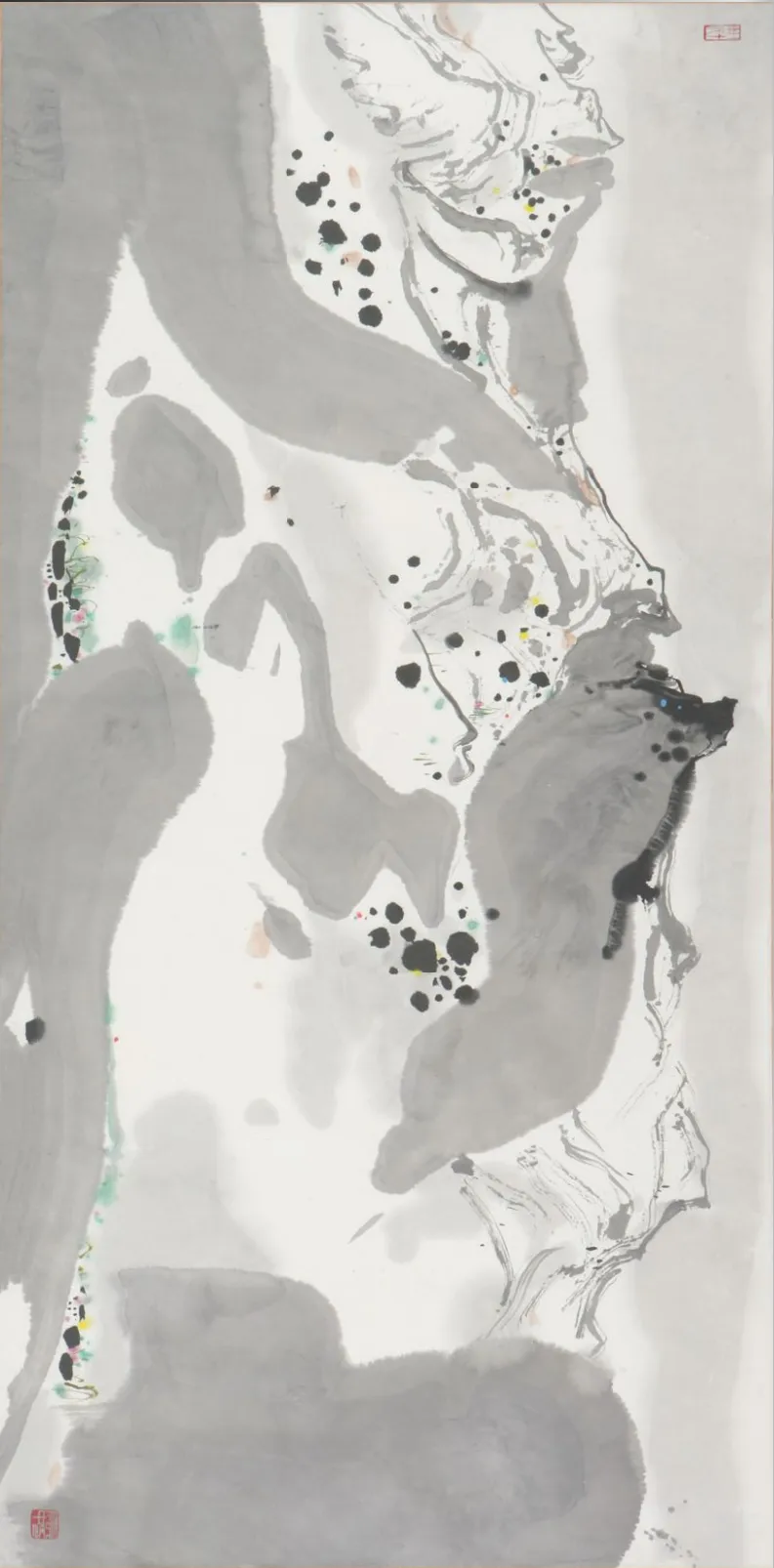
《巴山春雪》

《草荷》
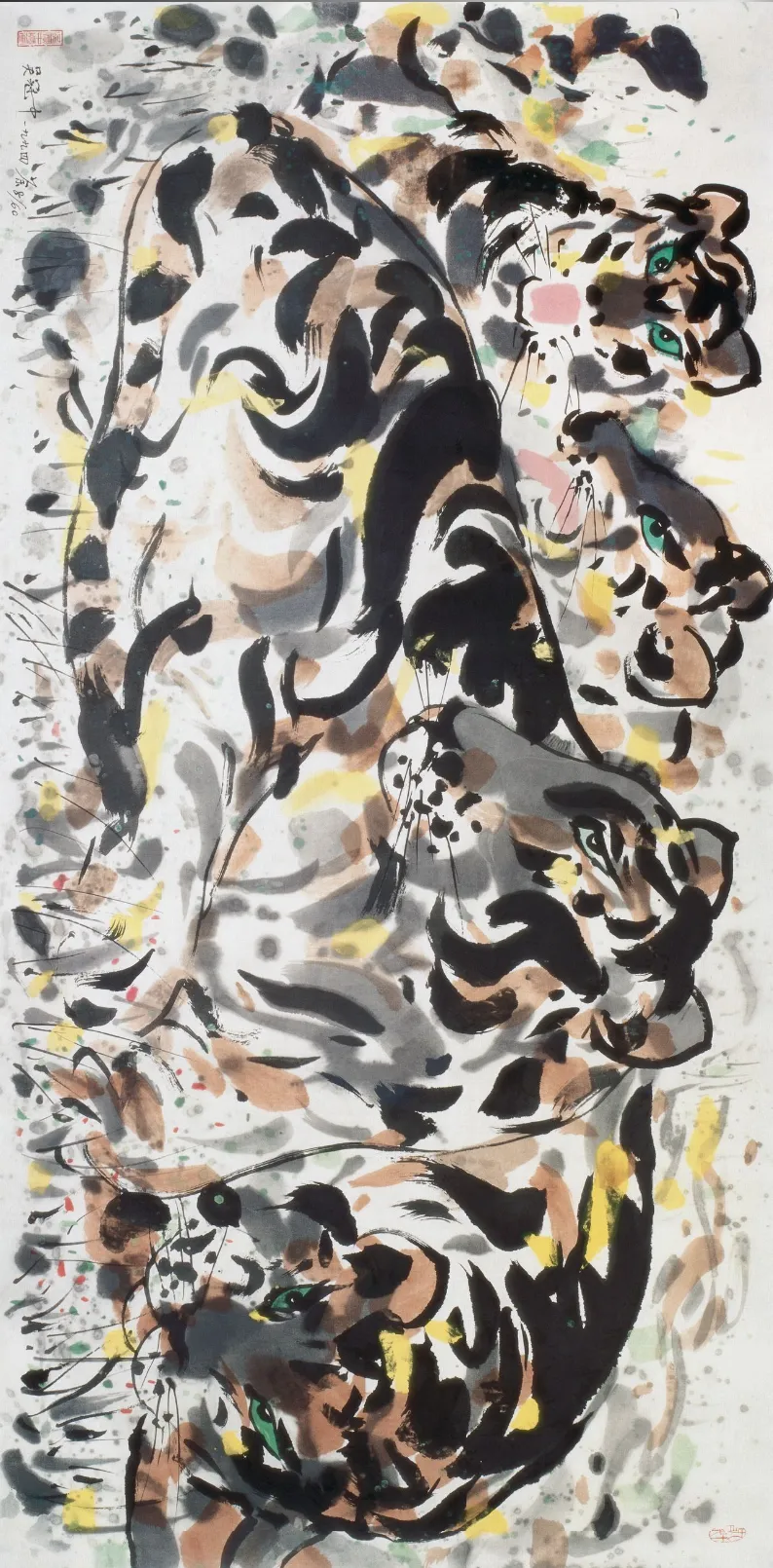
《虎》
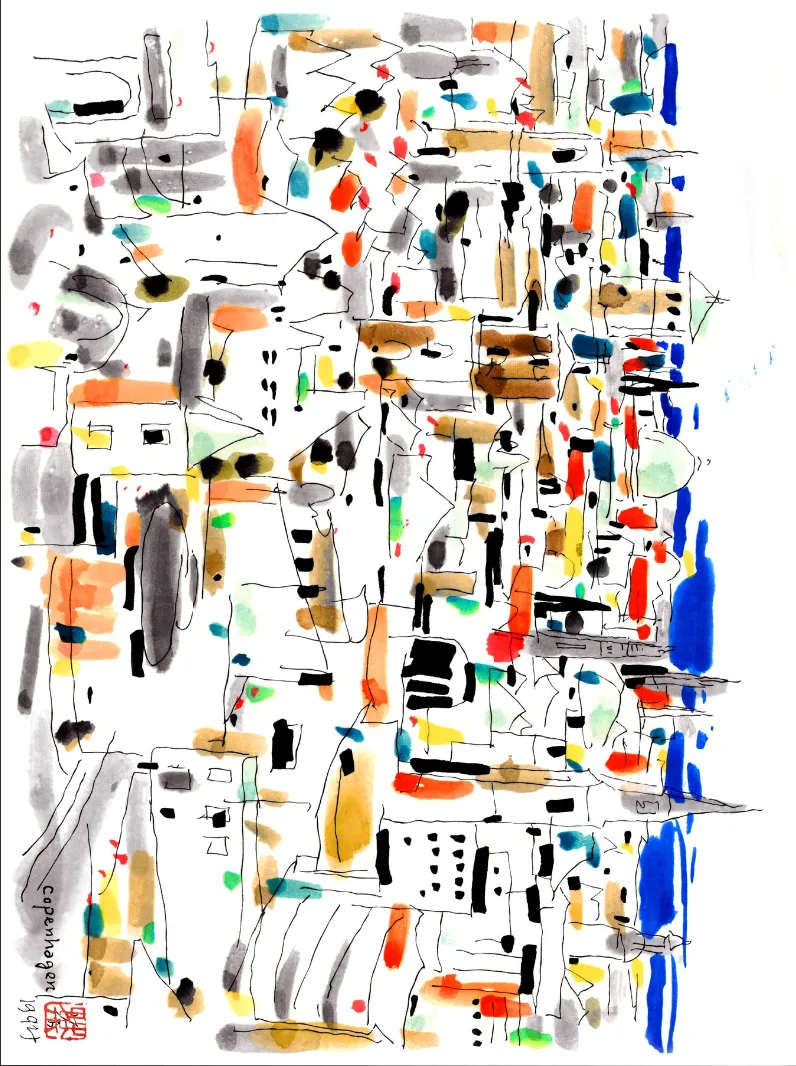
《哥本哈根》
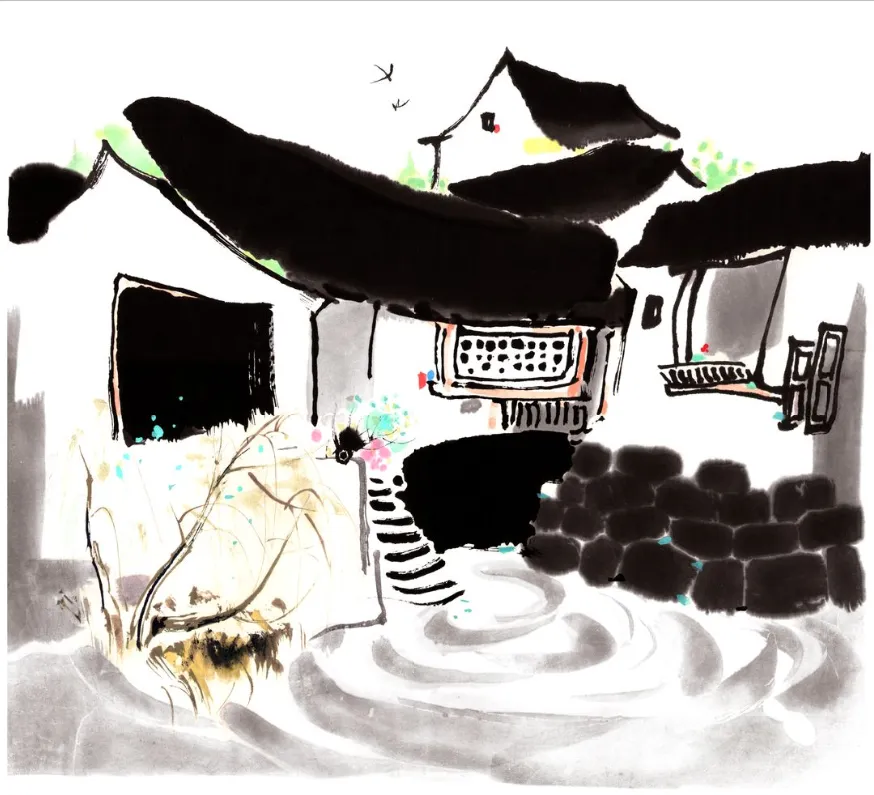
《春燕》
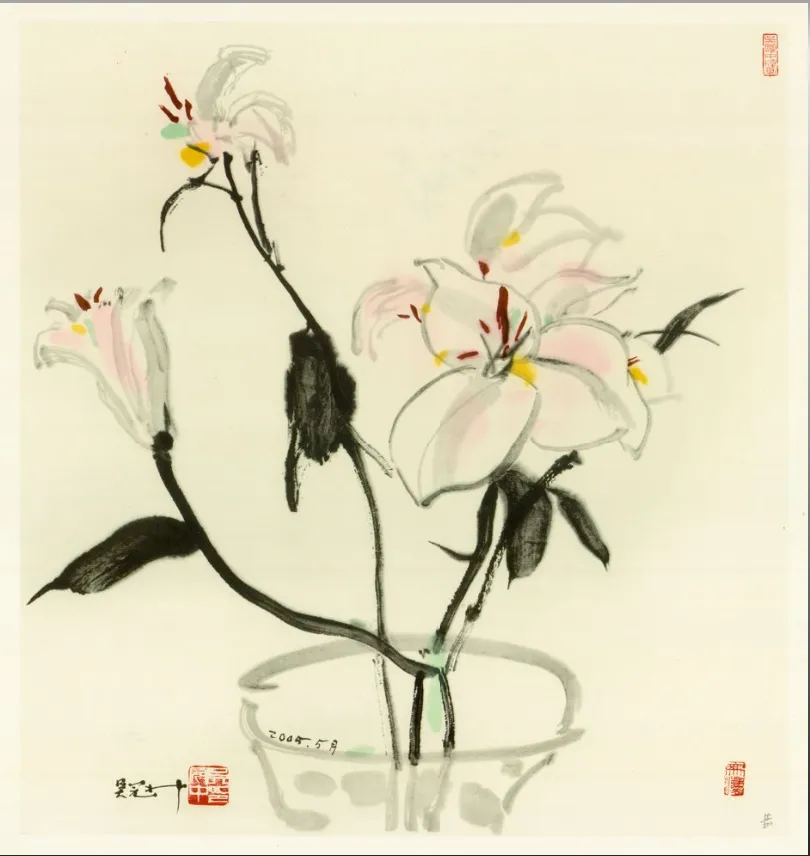
《丁香》
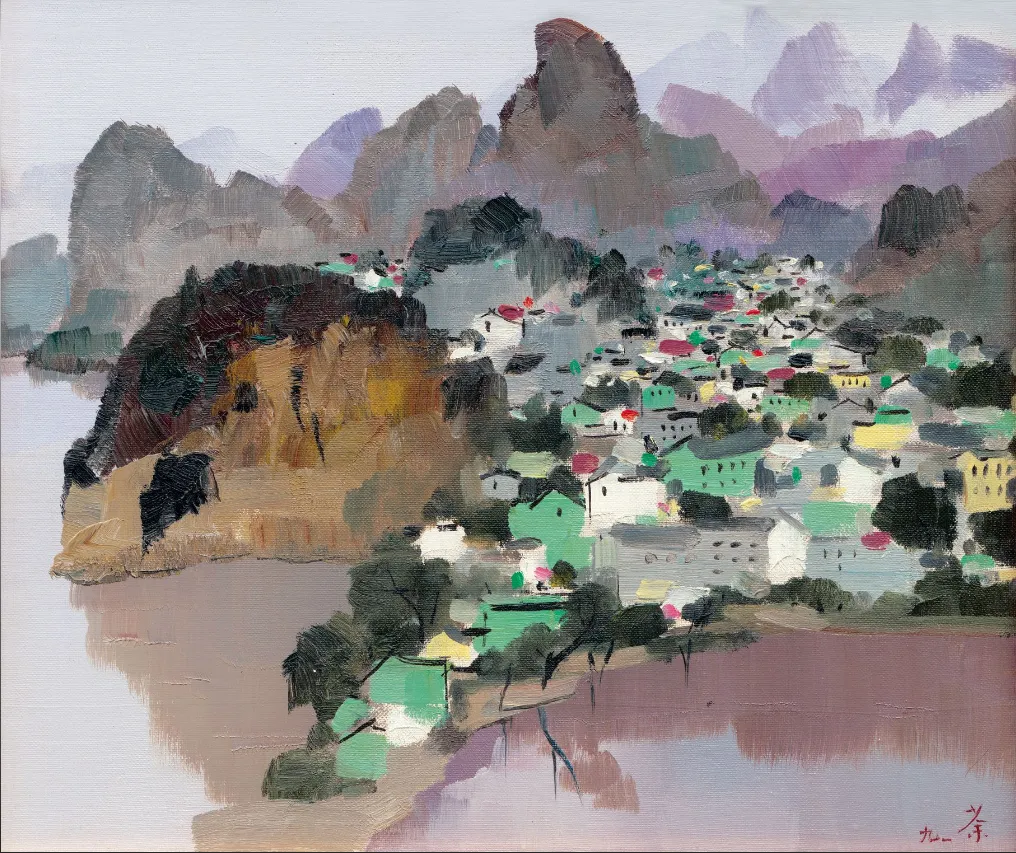
《桂林》
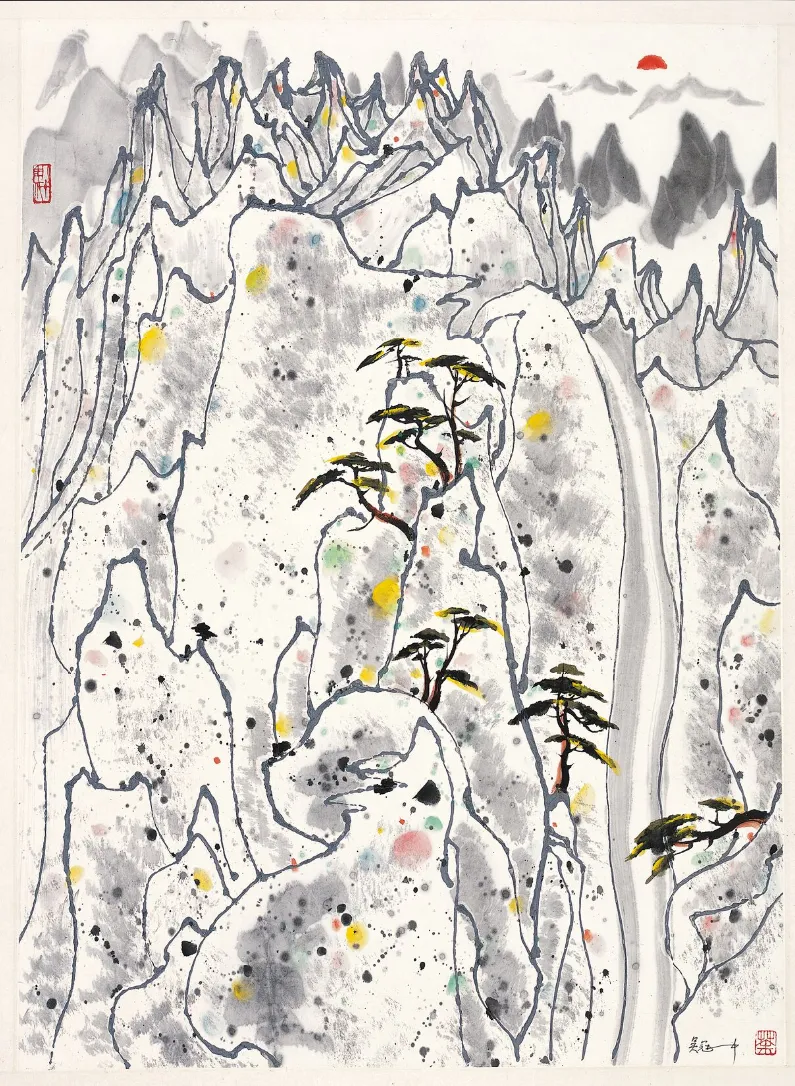
《黄山日出》
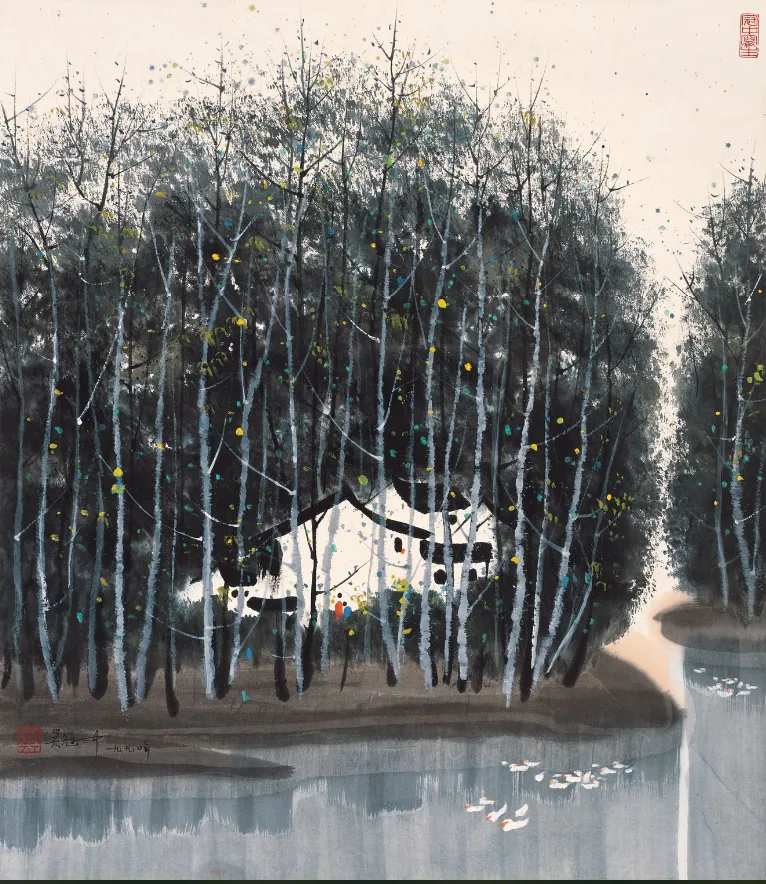
《林中》
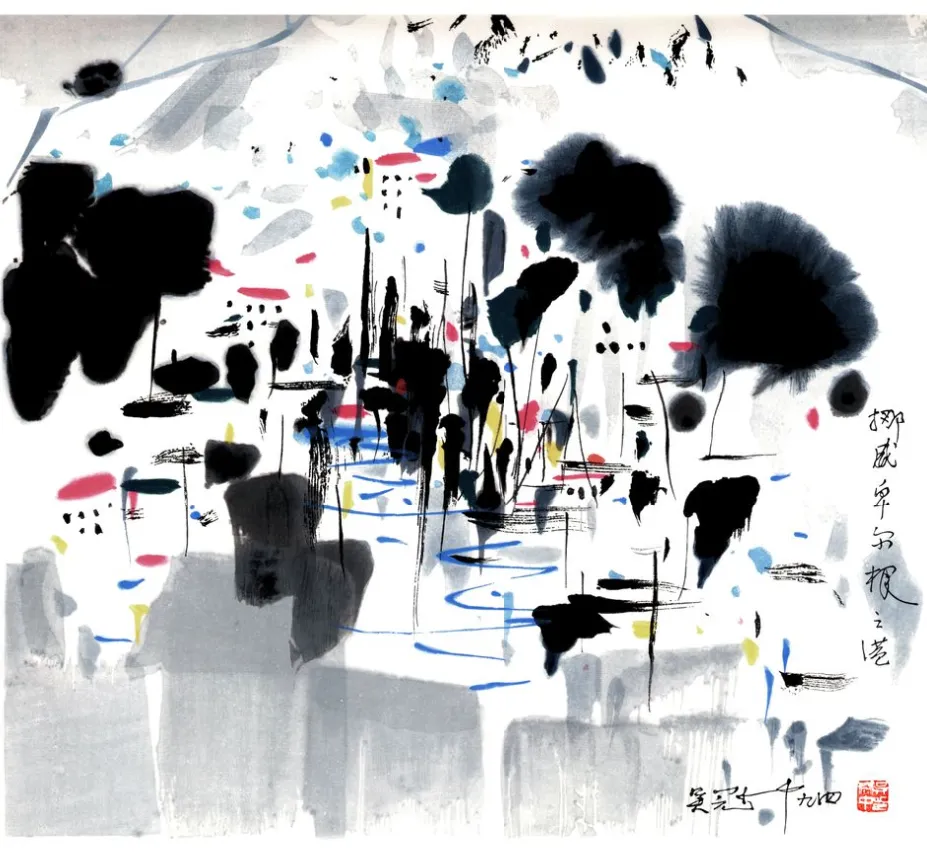
《挪威》
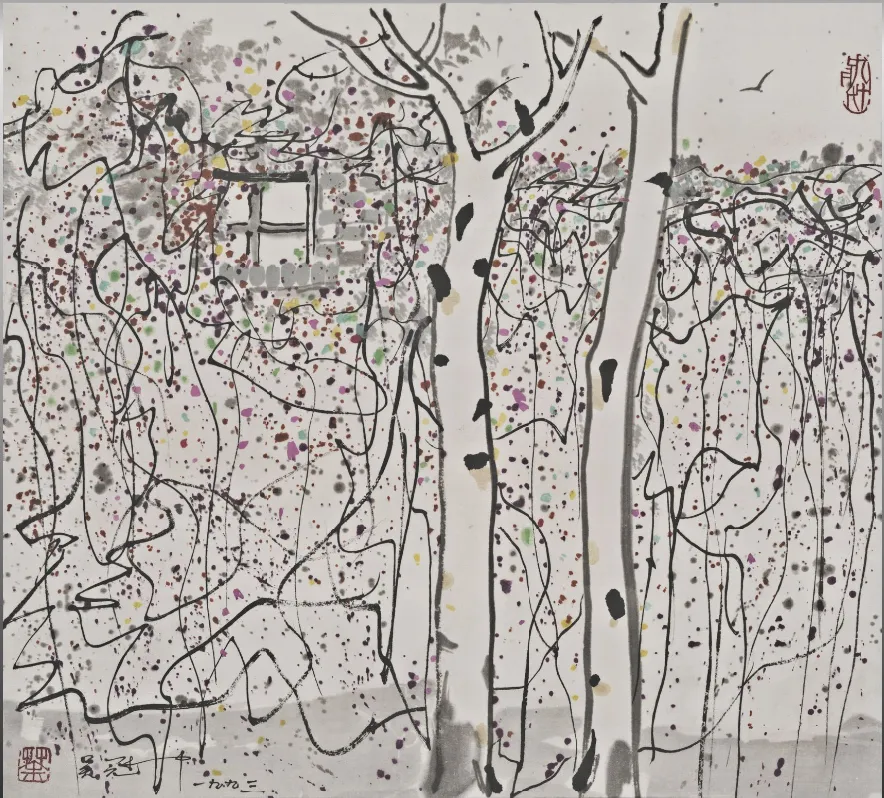
《秋》
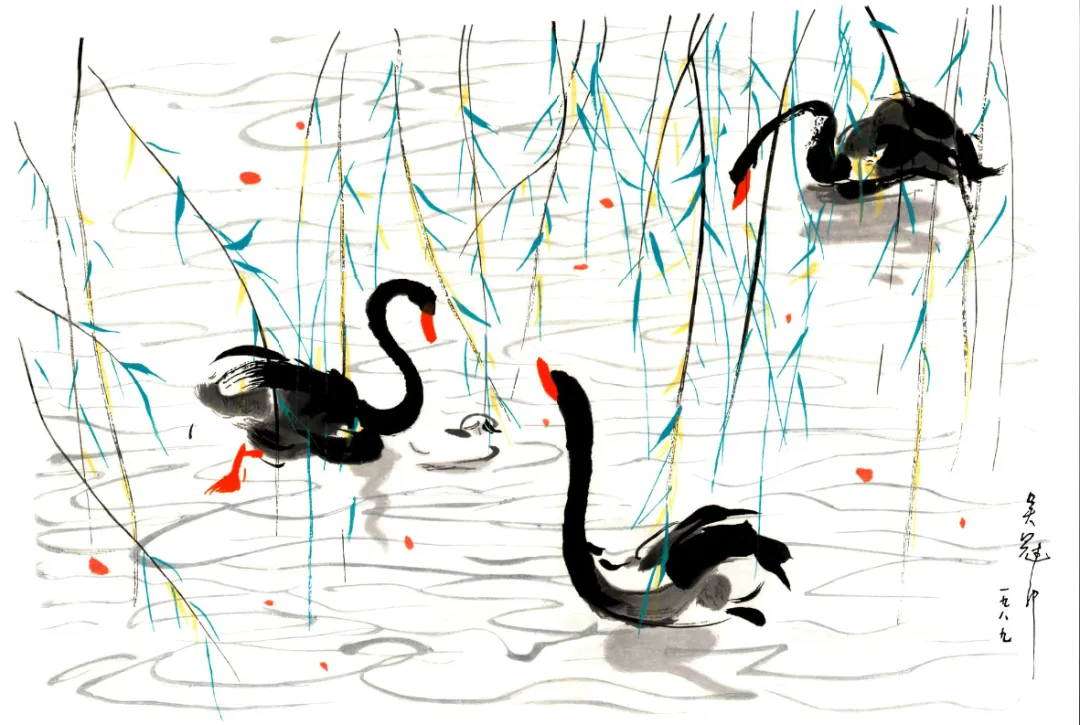
《三鹅》
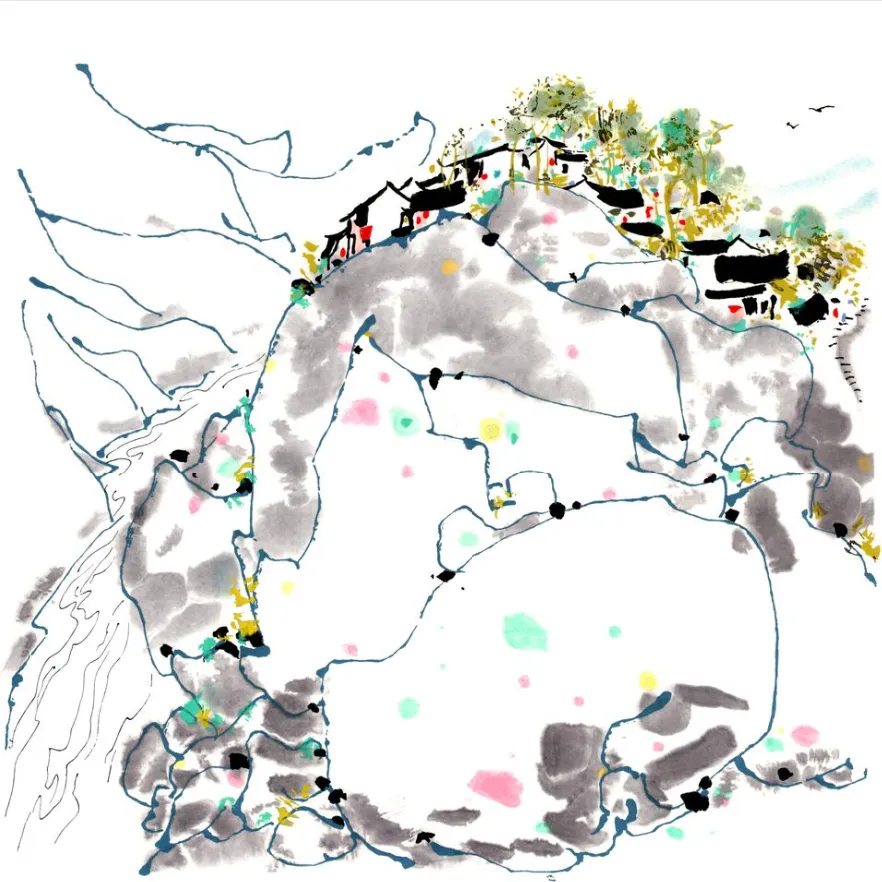
《山村小景》

《绍兴》
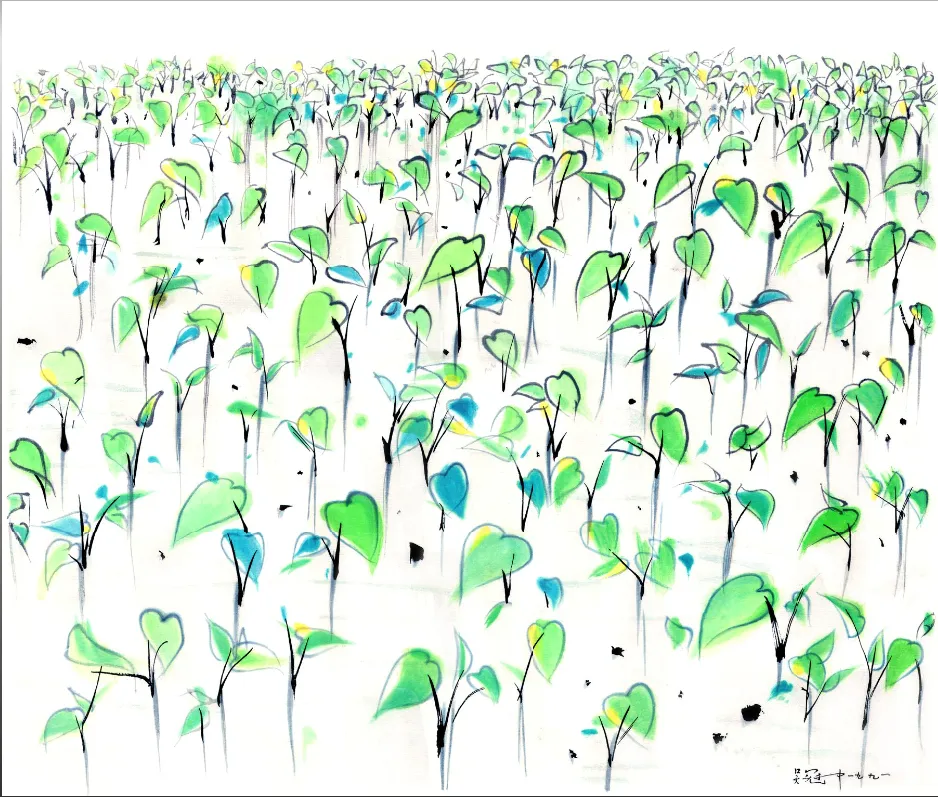
《新苗》
吴冠中以独步之艺,融汇中西画学之精粹,创清新明快之画风,富含民族特色,兼抒情之韵。其作如自然生命之歌,以山川为景,家园为布,捕捉万物之生,绘生命之理,抒胸中之块,表发现之喜。吴氏之艺,以锐利之文化眼光观自然,以深邃之创作眼光探生命。其画,恒以意象之境,显“写意”之艺,破具象抽象之界,开独有之风。自五十年代迄七十年代,吴氏专油画风景之制,探油画民族化之途。合欧西油画之生动与中华艺术之神,创和谐清新之色,宁静淡美之境,画面如诗,感人至深。江南水乡之画,春绿新发,雾霭轻笼,水村舍边,瓦黑墙白,宁静淡美之境,跃然纸上。自七十年代始,吴氏亦涉中国画之创。用中华之材,表现代之神,求国画之新。水墨构思新颖,章法别致,点线面交织,诗情画意,淋漓尽致。喜以半抽象之形,简括自然之律动,心理之感,作品既含东方传统之意,又显时代之征。
吴冠中,丹青妙手,以水墨之笔,绘自然之景,或鸟兽花草,皆以独到之目,撷其形之美。其所好者,乃能使之纵情挥洒,点线疏密,力度韵律,如山峦之起伏,草木之枝杈,岩石之纹理,屋宇之错落,皆足以启其画意。于吴氏笔下,山岳非徒静物,实为生命之律动。其山水画,非徒写自然之貌,更捕山岳之生韵。其作,深解山岳之韵,以黑白灰之彩,点线之律,化内心之激情为画面之生命。虽其水墨之技,章法异于古法,然其艺术之神,与历代水墨大师,心心相印,一脉相承。吴氏之画,现代演绎传统水墨,深刻领悟自然之美,大胆探索艺术自由之精神。其艺术,如无言之诗,有声之画,引人入胜,至意境悠远、大气磅礴之境。此中,山川草木,岩石屋宇,非复自然之质,皆化为艺术之符,为画家情感与自然对话之介,艺术与自然和谐共生之证。吴氏之水墨,颂自然之美,赞艺术自由之神。
吴氏之艺,其意深远,其情真挚,其思独立,其艺卓绝。其人其艺,皆为世范,其言其行,皆启后人。
Wu Guanzhong, with his unique approach, merged the best of Chinese and Western painting to develop a fresh and lively style, rich in national character and lyrical expression. His works were like songs of natural life, with landscapes as stages and homesteads as backdrops, capturing the essence of all living things and illustrating the principles of life, expressing personal feelings and celebrating new discoveries. Wu’s art viewed nature with a sharp cultural perspective and explored life with a profound creative vision. His paintings consistently transcended the boundaries between representational and abstract art, establishing a unique style. From the 1950s to the 1970s, Wu focused on oil painting landscapes, seeking to nationalize oil painting. He combined the vividness of Western oil painting with the spirit of Chinese art, creating harmonious and serene images that touched viewers deeply. His paintings of southern Chinese river towns, with their newly sprouted spring greens, light mists, and tranquil scenes of black-tiled, white-walled villages, came vividly to life on canvas. From the 1970s onwards, Wu also delved into traditional Chinese painting, using native materials to represent modern spirits and innovate within traditional Chinese painting. His ink paintings were innovative in composition, unique in structure, interweaving points, lines, and planes with poetic and picturesque charm, often embracing a semi-abstract style that succinctly captured the rhythms of nature and psychological impressions, blending traditional Eastern themes with contemporary expressions.
Wu Guanzhong, a master of ink painting, depicted natural scenes with a unique vision, capturing the beauty of birds, beasts, flowers, and plants. His preference allowed him to express himself freely, with variations in line density and rhythmic strength, resembling the undulations of mountains, the branching of trees, the textures of rocks, and the arrangement of buildings, all inspiring his artistic vision. In Wu’s hands, mountains were not mere objects but vibrant expressions of life. His landscape paintings captured not only the appearance of nature but also the living essence of mountains. His works deeply understood the rhythm of mountains, using shades of black, white, and gray, and the rhythm of lines to transform inner passion into vivid life on the canvas. Although his technique in ink painting deviated from traditional methods, his artistic spirit resonated with that of past masters, continuing their legacy. Wu’s paintings modernized traditional ink painting, profoundly understanding the beauty of nature and boldly exploring the spirit of artistic freedom. His art was like a wordless poem, a sounding painting, captivating viewers and leading them into a realm of profound, majestic beauty. In his work, mountains, vegetation, rocks, and buildings transcended their natural forms, becoming symbols in the artist's dialogue with nature, a testament to the harmonious coexistence of art and nature. Wu's ink paintings celebrated the beauty of nature and the spirit of artistic freedom.
Wu Guanzhong's art was profound in meaning, sincere in emotion, independent in thought, and exceptional in execution. Both the man and his art set standards for the world, inspiring future generations with his words and deeds.
责任编辑:苗君